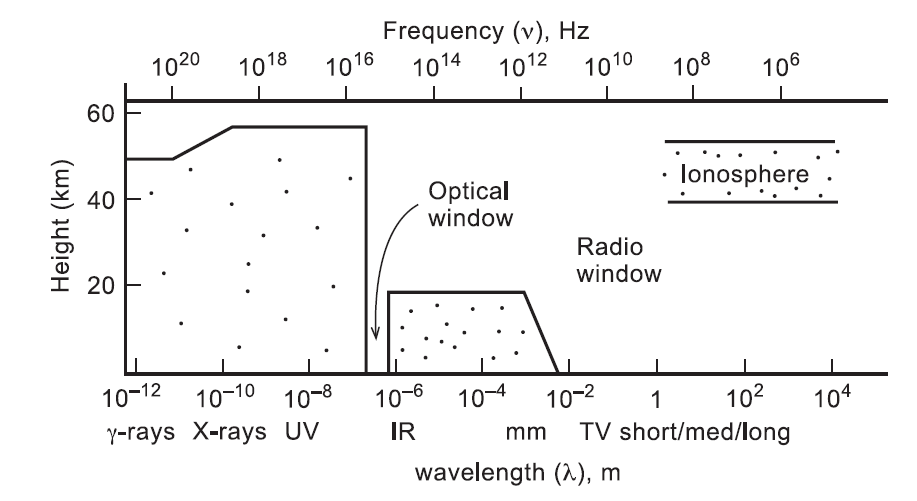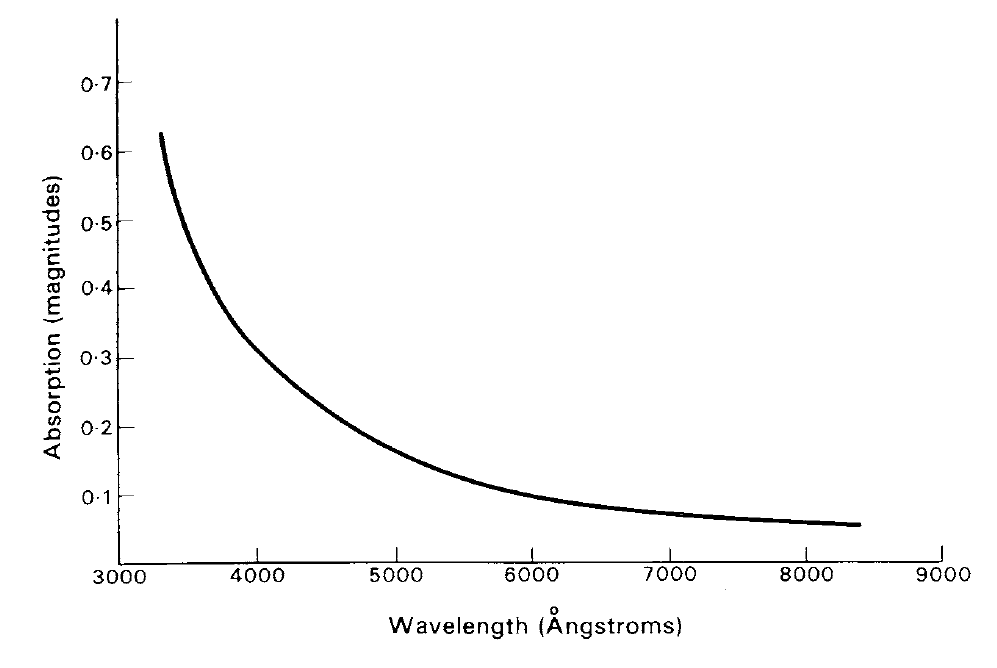
تاريخ الفيزياء

علماء الفيزياء


الفيزياء الكلاسيكية

الميكانيك

الديناميكا الحرارية


الكهربائية والمغناطيسية

الكهربائية

المغناطيسية

الكهرومغناطيسية


علم البصريات

تاريخ علم البصريات

الضوء

مواضيع عامة في علم البصريات

الصوت


الفيزياء الحديثة


النظرية النسبية

النظرية النسبية الخاصة

النظرية النسبية العامة

مواضيع عامة في النظرية النسبية

ميكانيكا الكم

الفيزياء الذرية

الفيزياء الجزيئية


الفيزياء النووية

مواضيع عامة في الفيزياء النووية

النشاط الاشعاعي


فيزياء الحالة الصلبة

الموصلات

أشباه الموصلات

العوازل

مواضيع عامة في الفيزياء الصلبة

فيزياء الجوامد


الليزر

أنواع الليزر

بعض تطبيقات الليزر

مواضيع عامة في الليزر


علم الفلك

تاريخ وعلماء علم الفلك

الثقوب السوداء


المجموعة الشمسية

الشمس

كوكب عطارد

كوكب الزهرة

كوكب الأرض

كوكب المريخ

كوكب المشتري

كوكب زحل

كوكب أورانوس

كوكب نبتون

كوكب بلوتو

القمر

كواكب ومواضيع اخرى

مواضيع عامة في علم الفلك

النجوم

البلازما

الألكترونيات

خواص المادة


الطاقة البديلة

الطاقة الشمسية

مواضيع عامة في الطاقة البديلة

المد والجزر

فيزياء الجسيمات


الفيزياء والعلوم الأخرى

الفيزياء الكيميائية

الفيزياء الرياضية

الفيزياء الحيوية

الفيزياء العامة


مواضيع عامة في الفيزياء

تجارب فيزيائية

مصطلحات وتعاريف فيزيائية

وحدات القياس الفيزيائية

طرائف الفيزياء

مواضيع اخرى
Factors affecting brightness
المؤلف:
A. Roy, D. Clarke
المصدر:
Astronomy - Principles and Practice 4th ed
الجزء والصفحة:
p 27
16-7-2020
2333
Factors affecting brightness
Not all the radiation which is incident on the outer atmosphere of the Earth is able to penetrate to a ground-based observer. The radiations of a large part of the frequency spectrum are either absorbed or reflected back into space and are consequently unavailable for measurement from the ground. The atmosphere is said to possess a window in any region of the spectrum which allows astronomical measurements.
Frequencies higher than those of ultraviolet light are all absorbed by a layer of ozone in the stratosphere which exists some 24 km above the Earth. Until the advent of space research, x-rays and γ -rays had not been detected from astronomical objects.
On the other side of the frequency band corresponding to visible radiation, a cut-off appears in the infrared. The absorption in this part of the spectrum is caused by molecules, chiefly water vapour. This cut-off is not very sharp and there are occasional windows in the infrared which are utilized for making observations. The absorption remains practically complete until the millimetre-wave region, where again a window appears. Over a broad part of the radio spectral range, the ionosphere lets through the radiation and the measurement of this form of energy belongs to the realm of the radio astronomer.

Figure 1. The windows of the Earth’s atmosphere are depicted with the source heights of the absorptions which prevent the main parts of the electromagnetic spectrum reaching the ground.
The two main windows for observation are depicted in figure 1. It may be pointed out that the boundaries are not as sharp as shown in this diagram. Comparison of the spectral widths of the main windows with the whole of the electromagnetic spectrum reveals the large range of frequencies which are unavailable to the ground-based observer and the potential information that is lost.
Above the Earth’s atmosphere, however, the full range of the electromagnetic spectrum is available. It has been one of the first tasks of the orbiting observatories and will eventually be that of lunar-based telescopes to make surveys and measurements of the sky in the spectral regions which had previously been unavailable.
For ground-based observations made through the transparent windows, corrections still need to be applied to measurements of the strength of any incoming radiation. This is particularly important for measurements made of optical radiation. By the time a beam of light has penetrated the Earth’s atmosphere, a large fraction of the energy has been lost, and stars appear to be less bright than they would be if they were to be viewed above the Earth’s atmosphere.
If an observing site is in an area where the air is pure and has little dust or smog content, most of the lost energy in the optical region is scattered out of the beam by the atoms and molecules in the

Figure 2. Absorption in the visible window caused by scattering from air molecules.
air. This type of scattering is known as Rayleigh scattering. According to Lord Rayleigh’s theory, atoms and molecules of any gas should scatter light with an efficiency which is inversely proportional to the fourth power of the wavelength (i.e. the scattering efficiency ∝ 1/λ4). Thus blue light, with a short wavelength, is scattered more easily than red light, which has a longer wavelength. Rayleigh’s law immediately gives the reason for the blueness of the daytime sky. During the day, some light, with its broad spectral range, is incident on the atmosphere. As it penetrates towards the ground, part of the energy is scattered in all directions by the molecules in the air. It is this scattered light which the observer sees as the sky. As the scattering process is extremely efficient for the shorter wavelengths, the sky consequently appears blue. When the Moon is observed in the daytime, a blue haze can be seen between it and the observer. This haze is a result of the scattering of some light by the molecules in the atmosphere along the path to the Moon’s direction.
Starlight, in its path through the Earth’s atmosphere, is weakened by this same process of scattering. As the scattering is wavelength dependent, so must be the weakening. The apparent absorption of starlight, or its extinction, is very much stronger in the blue part of the spectrum than in the red (see figure 2). Thus the colours of the stars are distorted because of the passage of their radiation through the Earth’s atmosphere. If colour measurements are to be attempted, then allowances must be made for the wavelength-selective extinction effects.
The amount of extinction obviously depends on the total number of molecules that the light beam encounters on its passage through the atmosphere, i.e. it depends on the light path. Thus the amount of extinction depends on the altitude of any given star. The light loss is at a minimum for any particular observing site when the star is positioned at the zenith. Even at this optimum position, the total transmission of visible light may only be typically 75%.
As a consequence of the extinction being dependent on a star’s altitude, any star will show changes in its apparent brightness during the course of a night as it rises, comes to culmination and then sets. Great care must be exercised when comparisons are made of the brightnesses of stars, especially when the stars cover a wide range of altitudes.
Radio energy is also absorbed on its passage through the layer of electrified particles known as the ionosphere. Further absorption occurs in the lower atmosphere. The amount of absorption is dependent on the particular frequency which is observed. Ionospheric absorption depends on the physical conditions within the layers and, as these are controlled to some extent by the activity on the Sun, the amount of absorption at some frequencies can vary greatly. Refraction caused by the ionosphere can also give rise to the diminution of radio signals. At low altitudes, the ionosphere can spread the radiation in the same way as a divergent lens, thus reducing the amount of energy which is collected by a given radio telescope.
In the lower atmosphere, the radio energy losses are caused by attenuation in rain clouds and absorption by water vapour and oxygen and they are thus dependent on the weather. However, lower atmosphere absorption effects are usually unimportant at wavelengths greater than 100 mm. Returning again to the optical region, simple naked eye observations reveal that the light from a star suffers rapid variations of apparent brightness. This twinkling effect is known as intensity scintillation and the departures of intensity from a mean level are known as scintillation noise.
Scintillation is caused by turbulence in the Earth’s atmosphere rather than by fluctuations in the scattering and absorption; it is certainly not an inherent property of the stars. Minute temperature differences in the turbulent eddies in the atmosphere give rise to pockets of air with small differences in refractive index. Different parts of the light beam from a star suffer random disturbances in their direction of travel. For brief instances, some parts of the energy are refracted beyond the edge of the telescope collecting area, causing a drop in the total energy which is collected. There are other instances when extra energy is refracted into the telescope aperture. Thus, the energy which is collected shows rapid fluctuations in its strength. The magnitude of the effect decreases as the telescope aperture increases, there being a better averaging out of the effect over a larger aperture. Scintillation is very noticeable to the naked eye as its collecting aperture is only a few millimetres in diameter. Brightness measurements are obtained by taking mean values through the scintillation noise and they are, therefore, subject to uncertainties of a random nature. The magnitude of these uncertainties depends on the strength of the scintillation noise, which in turn depends on the quality of the observing site, on the telescope system used and on the altitude of the star.
Scintillation is also encountered in the radio region of the spectrum and is mainly caused by inhomogeneities in the ionosphere. The fluctuations of signal strength which are observed are less rapid than those recorded in the optical region.
Although scintillation effects are detrimental to obtaining accurate measurements of a source’s brightness, studies of the form of scintillation noise itself, in both the optical and radio regions, are useful in gaining information about the Earth’s atmosphere, upper winds and the ionosphere.
Although allowances can be made successfully for the effects of atmospheric extinction, it is obvious that absolute brightness measurements, brightness comparisons and colour measurements could be made more easily, with less risk of large random and systematic errors, above the Earth’s atmosphere. Again, such measurements can be made by equipment on an orbiting platform or at a lunar observing station.
 الاكثر قراءة في مواضيع عامة في علم الفلك
الاكثر قراءة في مواضيع عامة في علم الفلك
 اخر الاخبار
اخر الاخبار
اخبار العتبة العباسية المقدسة

الآخبار الصحية















 قسم الشؤون الفكرية يصدر كتاباً يوثق تاريخ السدانة في العتبة العباسية المقدسة
قسم الشؤون الفكرية يصدر كتاباً يوثق تاريخ السدانة في العتبة العباسية المقدسة "المهمة".. إصدار قصصي يوثّق القصص الفائزة في مسابقة فتوى الدفاع المقدسة للقصة القصيرة
"المهمة".. إصدار قصصي يوثّق القصص الفائزة في مسابقة فتوى الدفاع المقدسة للقصة القصيرة (نوافذ).. إصدار أدبي يوثق القصص الفائزة في مسابقة الإمام العسكري (عليه السلام)
(نوافذ).. إصدار أدبي يوثق القصص الفائزة في مسابقة الإمام العسكري (عليه السلام)


















